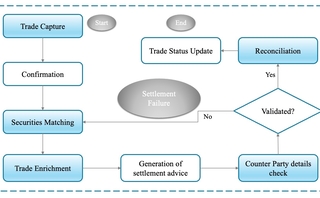
FactSet EMS adds fixed-income trading capabilities
Portware is already integrated with fixed-income electronic trading platform Trumid, as well as Tradeweb, MarketAxess, and Bloomberg.
FactSet has expanded its Portware execution management system (EMS) to include fixed-income trading capabilities. This is in addition to Portware’s existing capabilities in the listed assets and foreign exchange markets.
Stanley Kwasniewski, senior vice president and senior director for front-office solutions at FactSet, says the company has focused on being an open, multi-asset-class provider. Fixed-income capabilities have been on its radar for “a very long time”, he says, but the trading community has not been ready to electronify fixed-income trading workflows.
That is changing, however, as technology, downward pressure on margins, and regulation driving previously over-the-counter transactions onto lit venues have pushed electronification in fixed income over the past five years or so.
“We deliberately picked our timing for the release of fixed income at a point in time where not only our biggest existing clients were ready to take on that asset class, but we felt like the market in general was looking toward EMS providers to help them automate their fixed-income trading activity,” Kwasniewski tells WatersTechnology.
FactSet worked with longtime client GIC, Singapore’s sovereign wealth fund that manages its government reserves, to build these new capabilities. The new capabilities operate in parallel with the other asset classes already supporting GIC’s trading desks.
Kwasniewski says sustained cost pressures are also driving demand for solutions like Portware, as investment firms are reorganizing their trading desks, with fewer traders focusing on more asset classes.
This trend dovetails with more demand to automate low-touch trading within fixed income. If it’s easy to execute a trade, and there isn’t much value a trader can add to it, firms can automate that and free up time for the trader to focus on more complicated trades or more illiquid segments within fixed income. For example, if an equity trader now must also trade treasuries—a generally liquid fixed-income asset class—using Portware, that trader can automate the trading of some of those instruments.
“So even though you may not be a resident expert on day one, with a tool like Portware, we can now help you take on additional asset classes, particularly the liquid ones, as you elevate your knowledge and increase your level of sophistication that position you to potentially trade more complicated fixed-income security types later down the line,” Kwasniewski says.
Existing cost pressures are also causing clients to rationalize their spend on third-party systems, potentially leading them eliminate some of their EMS solutions. Kwasniewski says the company aims to be an open and interoperable technology provider, and that extends to Portware, which can be connected to adjacent systems with a “connective tissue” of APIs. “So Portware’s ability to be snapped in alongside other systems over a longer period of time as someone transitions over to Portware is a key benefit of our offering,” he says.
For example, in the case of a client looking to consolidate from multiple EMSs to only Portware, Kwasniewski says, “We would be able to get fixed income up and running within Portware, we’d be able to have Portware communicate with whatever their order management system is, and eventually allow them to consolidate fully down to our singular offering.”
FactSet sees openness as a potential differentiator from more closed competitors, Kwasniewski says. “As we got into fixed income, one of the things that we accomplished out of the gate is having multiple different venues that provide a good depth of different pools and sources of liquidity, which will be available through Portware. We’re going to continue to add a greater level of depth there,” he says.
The Portware EMS already has integrations with fixed-income electronic trading platform Trumid, as well as Tradeweb, MarketAxess, and Bloomberg. It is also exploring further integrations.
Kwasniewski says the aim is to expand the scope of venues offered on the system to give traders as much information as possible.
Data and pricing
FactSet has integrations with Bloomberg and Intercontinental Exchange (Ice) for fixed-income market data, including pricing, accrued interest, yields, and spreads. It has also integrated its library of more than 200 fixed-income analytics, which could potentially be used through Portware, and time and sales information integrated from Finra’s Trade Reporting and Compliance Engine (Trace).
Through the FactSet Workstation, Portware users also have access to company- and security-related information. This is to assist traders with decision-making support as they look at a bond and decide if they want to proceed with a trade or not, and if they do, whether that should be done manually or automated.
“Hypothetically, an example would be that we can show the evaluated prices for bonds that a trader could be looking to trade. We could also show actual executed prices from Trace. That provides some information to the trader to help them determine whether they want to proceed. Then they can get liquidity indicators from the different venues that we tap into,” Kwasniewski says.
That will help traders form a thesis on whether a particular bond trade will be easy or difficult, and that could help them decide whether to proceed. Or they could abandon that bond and redirect their focus to a bond with similar characteristics.
“It’s surrounding that trader with the intelligence and information they need in order to make that confident decision as to whether or not they’re going to have success proceeding with the trade or looking elsewhere,” Kwasniewski says.
Keiren Harris, a strategy-based market data consultant and founder of DataCompliance, says that, particularly for less liquid bonds, the problem is not so much the availability of electronic trading as price discovery.
“If FactSet can make available good price discovery for more instruments—so, rather than take market share away from somebody else, they add to the market—then it’s going to be a good thing, because that’s the biggest problem we face in fixed income or any OTC instrument which is fairly illiquid. You’ve got to have a good price, and it’s got to be fairly recent. If they’re adding the ability to get more pricing and more up-to-date pricing, that’s good news if you’re a fixed-income trader,” Harris says.
Unless there’s price discovery, a trading system is no better than a price terminal if there’s no one on the other end who is willing to trade, he adds. There’s a big difference in terms of timeliness and price discovery, for example, between a US 30-year bond and a small, Philippines-based company bond that’s illiquid but trades once every month.
“The issue comes down to whether or not there are two parties in the market who [are] willing to buy and sell. FactSet are going to find a pick-up in the liquid markets, but then they’re going to be competing very hard there. It’s as you move away from those liquid markets, to the off-the-runs, the less liquids, where if you’ve got more price discovery, you could get more trading—that’s where the market is really underserved,” Harris says.
Open and interoperable
Brant Worboys, associate director at asset and wealth management consulting firm Shoreline, says Portware is unavoidably open, as it can’t exist without connecting to other systems.
“FactSet historically never had an Abor [accounting book of record] or Ibor [investment book of record]. It has always been a popular quant platform, which then evolved into a sophisticated risk and performance analytics solutions. But that all relies on very high-quality data. Getting that data in and out of FactSet has always been hugely important, as well as other content from benchmark providers like MSCI and Bloomberg Barclays,” he says.
One example of this is that FactSet has opened up Portware’s proprietary bond calculation engine via API to provide a real-time tool that traders can use to simulate different scenarios for the instruments they were looking to trade.
Worboys says this is one of the ways in which FactSet has leveraged content built up from partnerships over the years.
“One of the interesting ones was with Ice, which has a product called Continuous Evaluated Pricing that offers a synthetic price for thinly traded bonds. A lot of clients want a moving price where they can estimate what they can execute if they need to liquidate a certain position and then to run that with intraday interest rates and things like that to do all their scenario analysis,” Worboys says.
“That’s the kind of capabilities that FactSet can offer in partnership with clients that want bespoke tools for their front-office professionals,” he says.
Harris says that FactSet’s entrance into the fixed-income EMS space is a good sign that the market is growing and healthy.
“The problems with fixed income are definitely structural. It’s not a matter of technology. It’s not a matter of players. But it does need more EMS players: you get more players, you get more people coming in, although you get a lot of fragmentation as it’s an OTC market,” he says.
Further reading
Only users who have a paid subscription or are part of a corporate subscription are able to print or copy content.
To access these options, along with all other subscription benefits, please contact info@waterstechnology.com or view our subscription options here: http://subscriptions.waterstechnology.com/subscribe
You are currently unable to print this content. Please contact info@waterstechnology.com to find out more.
You are currently unable to copy this content. Please contact info@waterstechnology.com to find out more.
Copyright Infopro Digital Limited. All rights reserved.
You may share this content using our article tools. Printing this content is for the sole use of the Authorised User (named subscriber), as outlined in our terms and conditions - https://www.infopro-insight.com/terms-conditions/insight-subscriptions/
If you would like to purchase additional rights please email info@waterstechnology.com
Copyright Infopro Digital Limited. All rights reserved.
You may share this content using our article tools. Copying this content is for the sole use of the Authorised User (named subscriber), as outlined in our terms and conditions - https://www.infopro-insight.com/terms-conditions/insight-subscriptions/
If you would like to purchase additional rights please email info@waterstechnology.com
More on Trading Tech
For MarketAxess, portfolio trading buoys flat revenue in Q3
The vendor is betting on new platforms like X-Pro and Adaptive Auto-X, which helped forge a record quarter for platform usage.
Quants look to language models to predict market impact
Oxford-Man Institute says LLM-type engine that ‘reads’ order-book messages could help improve execution
JP Morgan pulls plug on deep learning model for FX algos
The bank has turned to less complex models that are easier to explain to clients.
Nasdaq says SaaS business now makes up 37% of revenues
The exchange operator’s Q3 earnings bring the Adenza and Verafin acquisitions center stage.
Harnessing generative AI to address security settlement challenges
A new paper from IBM researchers explores settlement challenges and looks at how generative AI can, among other things, identify the underlying cause of an issue and rectify the errors.
The causal AI wave could be the next to hit
As LLMs and generative AI grab headlines, another AI subset is gaining ground—and it might solve what generative AI can’t.
Waters Wrap: Operational efficiency and managed services—a stronger connection
As cloud, AI, open-source, APIs and other technologies evolve, Anthony says the choice to buy or build is rapidly evolving for chief operating officers, too.
BlackRock forecasts return to fixed income amid efforts to electronify market
The world's largest asset manager expects bond markets to make headway once rates settle.








